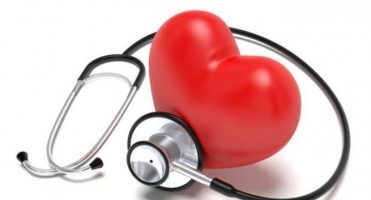- Home
- Editorial
- News
- Practice Guidelines
- Anesthesiology Guidelines
- Cancer Guidelines
- Cardiac Sciences Guidelines
- Critical Care Guidelines
- Dentistry Guidelines
- Dermatology Guidelines
- Diabetes and Endo Guidelines
- Diagnostics Guidelines
- ENT Guidelines
- Featured Practice Guidelines
- Gastroenterology Guidelines
- Geriatrics Guidelines
- Medicine Guidelines
- Nephrology Guidelines
- Neurosciences Guidelines
- Obs and Gynae Guidelines
- Ophthalmology Guidelines
- Orthopaedics Guidelines
- Paediatrics Guidelines
- Psychiatry Guidelines
- Pulmonology Guidelines
- Radiology Guidelines
- Surgery Guidelines
- Urology Guidelines
New Baroreflex Device eases symptoms and improves quality of life in Heart failure patients

New Baroreflex Device eases symptoms and improves quality of life in Heart failure patients, according to a trial reported at the Heart Rhythm Society meeting.
In the first pivotal trial of a device-based neuromodulation therapy in heart failure with reduced ejection fraction (HFrEF) patients, the BeAT-AF study, researchers have found that a novel implanted neuromodulation device substantially improved quality of life and functional capacity in these patients.
Heart failure with a reduced ejection fraction (HFrEF) is associated with poor life expectancy, frequent heart failure hospitalizations, lower quality of life, and substantial limitation in exercise capacity. The researchers hypothesized that HF symptoms will improve by increasing parasympathetic and decreasing sympathetic activity by using Baroreflex Activation Therapy (BAT).
The Barostim Neo device stimulates the baroreceptor with a 2 mm electrode that sits on the right carotid artery sinus and a lead extending to the generator. Baroreflex stimulation with it also improved the key prognostic biomarker N-terminal pro–B-type natriuretic peptide (NT-proBNP) in the subset of patients with a baseline level of 1,600 pg/mL or less, reflecting less advanced heart failure.
"To our knowledge, this is the first successful pivotal trial of a device-based neuromodulation therapy in HFrEF patients," Michael Zile, MD, of the Medical University of South Carolina in Charleston, said when presenting the results at a late-breaking clinical trial session here at the Heart Rhythm Society meeting.
"We think this fills the unmet need for those patients who are class III who cannot or should not receive a CRT [cardiac resynchronization therapy], which we think is about 50% of the heart failure reduced ejection fraction population," Zile concluded at a press conference.
The study as originally designed included 271 patients with New York Heart Association (NYHA) class III HF with ejection fraction of 35% or lower, a 6-minute hall walk distance of 150 to 400 m, elevated NT-proBNP or prior heart failure hospitalization, and on stable optimal medical therapy, but ineligible for CRT.
The prospective two-phase randomized controlled trial (BeAT-HF; included 271 patients with New York Heart Association (NYHA) class III HF with ejection fraction of 35% or lower, a 6-minute hall walk distance of 150 to 400 m, elevated NT-proBNP or prior heart failure hospitalization, and on stable optimal medical therapy, but ineligible for CRT. Data collection also includes recurrent heart failure hospitalizations and cardiovascular mortality for the extended outcome (second) phase of the study (ongoing).
They were randomized to be implanted with the device or continue receiving optimal medical therapy alone and followed for 6 months to the initial unblinding for the primary endpoints. Morbidity and mortality would then be followed in the longer term.
Three of the four efficacy endpoints came out positive for change over baseline: Minnesota Living With Heart Failure Questionnaire quality-of-life scores, 6-minute walk distance, and safety (94% free from major adverse neurological cardiovascular events, compared with performance criteria of 85%).
The investigators found that in the combined analysis, baroreflex stimulation reduced NT-proBNP by 21% over baseline levels compared with a 3.3% increase in the control group (P=0.004). Such a reduction predicts a "marked decrease in morbidity and mortality. Quality-of-life scores improved by 14.1 points more than seen among controls (P<0.001). "Most studies consider a positive, successful result a 5-point reduction," Authors noted. Exercise tolerance on a 6-minute walk test improved by 56.5 meters more than seen with optimal medical therapy alone (P<0.001).
The device maker is planning to develop a percutaneous approach that could do away with the surgery required for placement. In future, BeAT-HF will determine whether BAT is safe and improves symptoms in GDMT treated NYHA Class III patients with HFrEF.
For more details click on the link:
Source Reference: Zile MR, et al "Baroreflex Activation Therapy In Patients With Heart Failure With A Reduced Ejection Fraction" HRS 2019; Abstract LBCT01-04.

Disclaimer: This site is primarily intended for healthcare professionals. Any content/information on this website does not replace the advice of medical and/or health professionals and should not be construed as medical/diagnostic advice/endorsement or prescription. Use of this site is subject to our terms of use, privacy policy, advertisement policy. © 2020 Minerva Medical Treatment Pvt Ltd